Microphysical Characteristics of Summer Precipitation over the Taklamakan Desert Based on GPM-DPR Data from 2014 to 2023
Abstract
1. Introduction
2. Data and Methods
3. Microphysical Characteristics of Convective and Stratiform Precipitation
4. Relationship Between Precipitation Intensity and Microphysical Processes
5. Conclusions
- In the arid region (TD), the mean liquid water path (528.7 and 269.5 gm−2) during convective and stratiform precipitation is lower than that in the wet regions (e.g., the Arabian Sea) (2923.1 and 888.1 gm−2) [40], reflecting the characteristics of limited low-level liquid water in arid regions. The LWP of stratiform precipitation is lower than that of convective precipitation, corresponding to the precipitation in the arid region (TD) being dominated by stratiform precipitation (84.1% of total precipitation). Due to the different LWPs in convective and stratiform precipitation, the raindrop diameter in stratiform precipitation (1.2 mm) is smaller than that in convective precipitation (1.7 mm); while the raindrop number concentration in stratiform precipitation (34.3 mm−1 m−3) is higher than that in convective precipitation (31.9 mm−1 m−3), indicating that the raindrops are easier to grow under the environment of sufficient water vapor at the lower level.
- In convective precipitation in the arid region (TD), liquid particles are primarily formed by the uplift and condensation of low-level water vapor. During the uplift process of liquid particles in convective precipitation, a collision–coalescence process occurs, with the collision–coalescence process contributing the most to the raindrops (59.7%). In stratiform precipitation, liquid particles are mainly formed by the melting of upper-level ice-phase hydrometeors and their undergoing break-up, with the break-up process contributing the most to raindrops (51.0%).
- The precipitation rates in both convective and stratiform precipitation in the arid region (TD) are closely related to the liquid water content (LWP), with correlations exceeding 0.9. Warm rain processes in both convective and stratiform precipitation are important for raindrop formation; the more liquid water in the lower layers, the greater the collision–coalescence, the larger the raindrop diameter, and the greater the precipitation rate.
Author Contributions
Funding
Institutional Review Board Statement
Informed Consent Statement
Data Availability Statement
Conflicts of Interest
References
- Muller, A.; Reason, C.J.C.; Fauchereau, N. Extreme Rainfall in the Namib Desert during Late Summer 2006 and Influences of Regional Ocean Variability. Int. J. Climatol. 2008, 28, 1061–1070. [Google Scholar] [CrossRef]
- Smith, J.A.; Baeck, M.L.; Yang, L.; Signell, J.; Morin, E.; Goodrich, D.C. The Paroxysmal Precipitation of the Desert: Flash Floods in the Southwestern United States. Water Resour. Res. 2019, 55, 10218–10247. [Google Scholar] [CrossRef]
- Meseguer-Ruiz, O.; Ponce-Philimon, P.I.; Baltazar, A.; Guijarro, J.A.; Serrano-Notivoli, R.; Olcina Cantos, J.; Martin-Vide, J.; Sarricolea, P. Synoptic Attributions of Extreme Precipitation in the Atacama Desert (Chile). Clim. Dyn. 2020, 55, 3431–3444. [Google Scholar] [CrossRef]
- Yao, J.; Chen, Y.; Chen, J.; Zhao, Y.; Tuoliewubieke, D.; Li, J.; Yang, L.; Mao, W. Intensification of Extreme Precipitation in Arid Central Asia. J. Hydrol. 2021, 598, 125760. [Google Scholar] [CrossRef]
- Donat, M.G.; Lowry, A.L.; Alexander, L.V.; O’Gorman, P.A.; Maher, N. More Extreme Precipitation in the World’s Dry and Wet Regions. Nat. Clim. Change 2016, 6, 508–513. [Google Scholar] [CrossRef]
- Ingram, W. Increases All Round. Nat. Clim. Change 2016, 6, 443–444. [Google Scholar] [CrossRef]
- Tollefson, J. Global Warming Already Driving Increases in Rainfall Extremes. Nature News, 7 March 2016. [Google Scholar] [CrossRef]
- Li, M.; Yao, J. Precipitation Extremes Observed over and around the Taklimakan Desert, China. PeerJ 2023, 11, e15256. [Google Scholar] [CrossRef] [PubMed]
- Dong, W.; Ming, Y.; Deng, Y.; Shen, Z. Recent Wetting Trend over Taklamakan and Gobi Desert Dominated by Internal Variability. Nat. Commun. 2024, 15, 4379. [Google Scholar] [CrossRef]
- Xueying, Z.; Jian, J.; Guoqiang, L.; Fang, W.; Huimin, Q.; Huaiqin, S. Characteristics of Precipitation at Hinterland of Taklimakan Desert, China. J. Desert Res. 2019, 39, 187. [Google Scholar] [CrossRef]
- Wang, C.; Zhang, S.; Li, K.; Zhang, F.; Yang, K. Change Characteristics of Precipitation in Northwest China from 1961 to 2018. DQKX 2021, 45, 713–724. [Google Scholar] [CrossRef]
- Wang, C.; Zhang, S.; Zhang, F.; Kechen, L.; Yang, K. On the Increase of Precipitation in the Northwestern China under the Global Warming. Adv. Earth Sci. 2021, 36, 980. [Google Scholar]
- Gong, Y.; Yu, H.; Hu, H.; Huang, J.; Ren, Y.; Zhou, J.; Peng, M.; Chen, S.; Alam, K.; Zhao, W.; et al. The Water Vapor Origin of a Rainstorm Event in the Taklamakan Desert. J. Geophys. Res. Atmos. 2024, 129, e2024JD041382. [Google Scholar] [CrossRef]
- Ren, G.Q.; Zhao, Y. Relationship between the Subtropical Westerly Jet and Summer Rainfall over Central Asia from 1961 to 2016. Plateau Meteorol. 2022, 41, 1425–1434. [Google Scholar]
- Yang, L.M.; Liu, J. Some advances of water vapor research in Xinjiang. J. Nat. Hazards 2018, 27, 1–13. [Google Scholar]
- Ayitken, M.; Yang, L.M.; Zhang, Y.H.; Musa, Y. Characteristic analysis of environment of short-time heavy rainfall under the background of the Central Asian Vortex in Xinjiang in recent ten years. Arid Zone Geogr. 2018, 41, 273–281. [Google Scholar]
- Hu, Q.; Zhao, Y.; Huang, A.; Ma, P.; Ming, J. Moisture transport and sources of the extreme precipitation over northern and southern Xinjiang in the summer half-year during 1979–2018. Front. Earth Sci. 2021, 9, 770877. [Google Scholar] [CrossRef]
- Wang, C.; Li, J.; Zhang, F.; Yang, K. Changes in the moisture contribution over global arid regions. Clim. Dyn. 2023, 61, 543–557. [Google Scholar] [CrossRef]
- Biggerstaff, M.I.; Houze, R.A. Kinematics and Microphysics of the Transition Zone of the 10–11 June 1985 Squall Line. J. Atmos. Sci. 1993, 50, 3091–3110. [Google Scholar] [CrossRef]
- Tremblay, A. The Stratiform and Convective Components of Surface Precipitation. J. Atmos. Sci. 2005, 62, 1513–1528. [Google Scholar] [CrossRef]
- Anagnostou, E.N. A Convective/Stratiform Precipitation Classification Algorithm for Volume Scanning Weather Radar Observations. Meteorol. Appl. 2004, 11, 291–300. [Google Scholar] [CrossRef]
- Powell, S.W.; Houze, R.A.; Brodzik, S.R. Rainfall-Type Categorization of Radar Echoes Using Polar Coordinate Reflectivity Data. J. Atmos. Ocean. Technol. 2016, 33, 523–538. [Google Scholar] [CrossRef]
- Kong, X.; Yang, J.; Li, H.; Fu, Z. Analysis on Water Vapor Characteristics of an Extreme Rainstorm in the Arid Region of Western Hexi Corridor. Meteorol. Mon. 2021, 47, 412–423. [Google Scholar]
- Fu, S.; Wang, F.; Li, B.; Fang, C. Raindrop Spectral Characteristics of an Autumn Convective Precipitation on the North Slope of the Qilian Mountains. Available online: http://azr.xjegi.com/CN/10.13866/j.azr.2024.10.01 (accessed on 20 February 2025).
- Schumacher, C.; Funk, A. Assessing Convective-Stratiform Precipitation Regimes in the Tropics and Extratropics With the GPM Satellite Radar. Geophys. Res. Lett. 2023, 50, e2023GL102786. [Google Scholar] [CrossRef]
- Schumacher, C.; Houze, R.A. Stratiform Rain in the Tropics as Seen by the TRMM Precipitation Radar. J. Clim. 2003, 16, 1739–1756. [Google Scholar] [CrossRef]
- Zeng, Y.; Yang, L.; Tong, Z.; Jiang, Y.; Zhang, Z.; Zhang, J.; Zhou, Y.; Li, J.; Liu, F.; Liu, J. Statistical Characteristics of Raindrop Size Distribution during Rainy Seasons in Northwest China. Adv. Meteorol. 2021, 2021, 6667786. [Google Scholar] [CrossRef]
- Huo, Z.; Ruan, Z.; Wei, M.; Ge, R.; Li, F.; Ruan, Y. Statistical Characteristics of Raindrop Size Distribution in South China Summer Based on the Vertical Structure Derived from VPR-CFMCW. Atmos. Res. 2019, 222, 47–61. [Google Scholar] [CrossRef]
- Hu, X.; Ai, W.; Qiao, J.; Hu, S.; Han, D.; Yan, W. Microphysics of Summer Precipitation over Yangtze-Huai River Valley Region in China Revealed by GPM DPR Observation. Earth Space Sci. 2022, 9, e2021EA002021. [Google Scholar] [CrossRef]
- Kumar, S. Precipitation Structure and Convective Intensity over South-East South Asia During Active and Break Spells of the Indian Summer Monsoon Using TRMM, GPM, Megha-Tropiques Satellites and Reanalysis Data. Int. J. Climatol. 2025, e8758. [Google Scholar] [CrossRef]
- Li, D.; Qi, Y.; Li, H. Vertical Structures and Microphysical Characteristics of Summer Precipitation in North China Detected by GPM-DPR. Sci. Total Environ. 2024, 933, 173129. [Google Scholar] [CrossRef]
- D’Adderio, L.P.; Vulpiani, G.; Porcù, F.; Tokay, A.; Meneghini, R. Comparison of GPM Core Observatory and Ground-Based Radar Retrieval of Mass-Weighted Mean Raindrop Diameter at Midlatitude. J. Hydrometeorol. 2018, 19, 1583–1598. [Google Scholar] [CrossRef]
- Skofronick-Jackson, G.; Kirschbaum, D.; Petersen, W.; Huffman, G.; Kidd, C.; Stocker, E.; Kakar, R. The Global Precipitation Measurement (GPM) Mission’s Scientific Achievements and Societal Contributions: Reviewing Four Years of Advanced Rain and Snow Observations. Q. J. R. Meteorol. Soc. 2018, 144, 27–48. [Google Scholar] [CrossRef] [PubMed]
- Masaki, T.; Iguchi, T.; Kanemaru, K.; Furukawa, K.; Yoshida, N.; Kubota, T.; Oki, R. Calibration of the Dual-Frequency Precipitation Radar Onboard the Global Precipitation Measurement Core Observatory. IEEE Trans. Geosci. Remote Sens. 2022, 60, 5100116. [Google Scholar] [CrossRef]
- Gao, J.; Tang, G.; Hong, Y. Similarities and Improvements of GPM Dual-Frequency Precipitation Radar (DPR) upon TRMM Precipitation Radar (PR) in Global Precipitation Rate Estimation, Type Classification and Vertical Profiling. Remote Sens. 2017, 9, 1142. [Google Scholar] [CrossRef]
- Iguchi, T.; Seto, S.; Meneghini, R.; Yoshida, N.; Awaka, J.; Kubota, T. GPM/DPR Level-2 Algorithm Theoretical Basis Document; NASA Goddard Space Flight Center: Greenbelt, MD, USA, 2010. Available online: https://gpm.nasa.gov/resources/documents/gpmdpr-level-2-algorithm-theoretical-basis-document-atbd (accessed on 1 March 2025).
- Bringi, P.V.N.; Chandrasekar, V. Polarimetric Doppler Weather Radar: Principles and Applications; Cambridge University Press: Cambridge, UK, 2001. [Google Scholar]
- Behrangi, A.; Song, Y.; Huffman, G.J.; Adler, R.F. Comparative Analysis of the Latest Global Oceanic Precipitation Estimates from GPM V07 and GPCP V3.2 Products. J. Hydrometeorol. 2024, 25, 293–309. [Google Scholar] [CrossRef]
- Cannon, F.; Ralph, F.M.; Wilson, A.M.; Lettenmaier, D.P. GPM Satellite Radar Measurements of Precipitation and Freezing Level in Atmospheric Rivers: Comparison with Ground-Based Radars and Reanalyses. J. Geophys. Res. Atmos. 2017, 122, 12–747. [Google Scholar]
- Kumar, A.; Srivastava, A.K.; Sunilkumar, K.; Srivastava, M.K. Microphysical Characteristics of Cyclonic Rainfall: A GPM-DPR Based Study Over the Arabian Sea. Earth Space Sci. 2023, 10, e2023EA002895. [Google Scholar] [CrossRef]
- Kumjian, M.R.; Prat, O.P. The Impact of Raindrop Collisional Processes on the Polarimetric Radar Variables. J. Atmos. Sci. 2014, 71, 3052–3067. [Google Scholar] [CrossRef]
- Huang, H.; Chen, F. Precipitation Microphysics of Tropical Cyclones Over the Western North Pacific Based on GPM DPR Observations: A Preliminary Analysis. J. Geophys. Res. Atmos. 2019, 124, 3124–3142. [Google Scholar] [CrossRef]
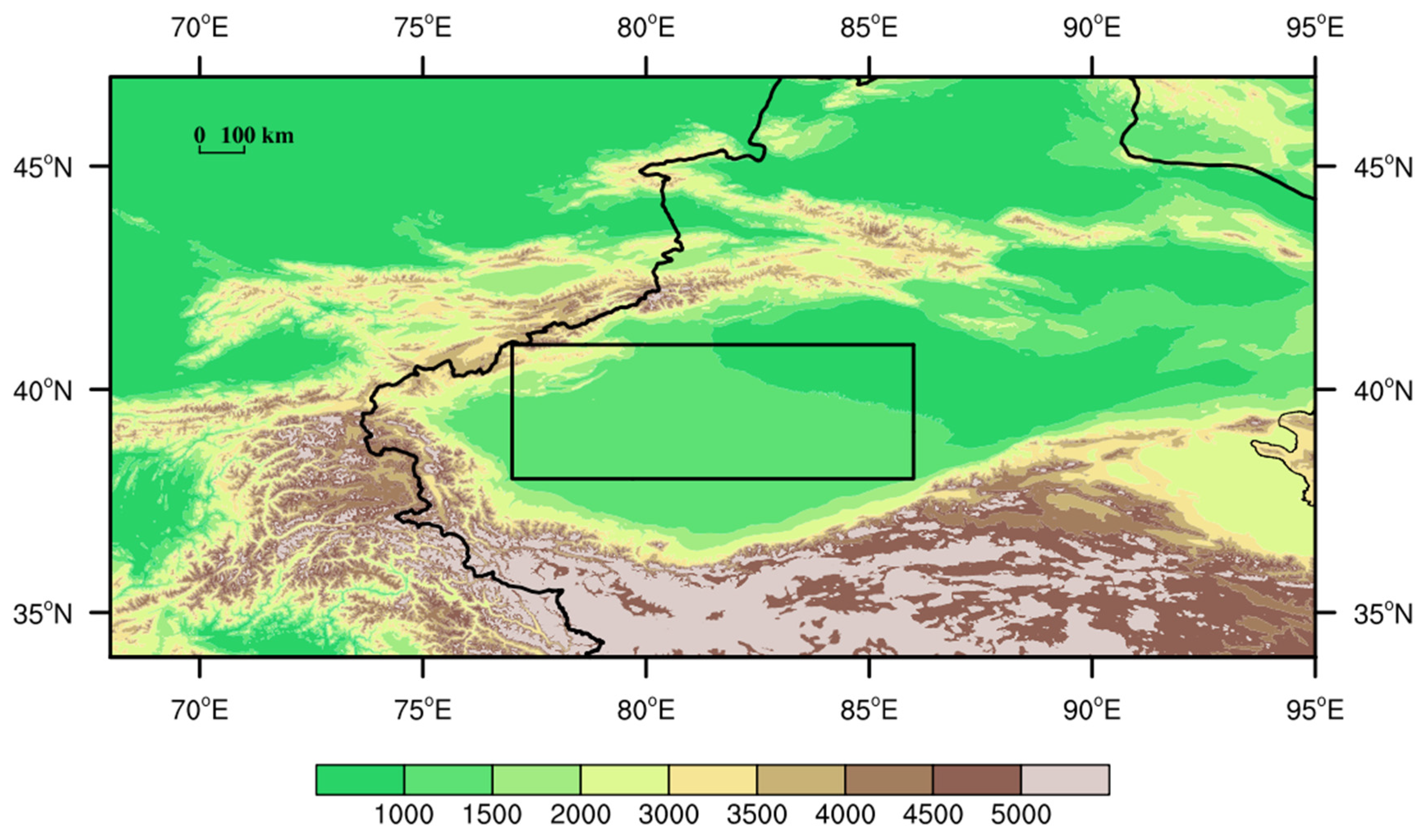
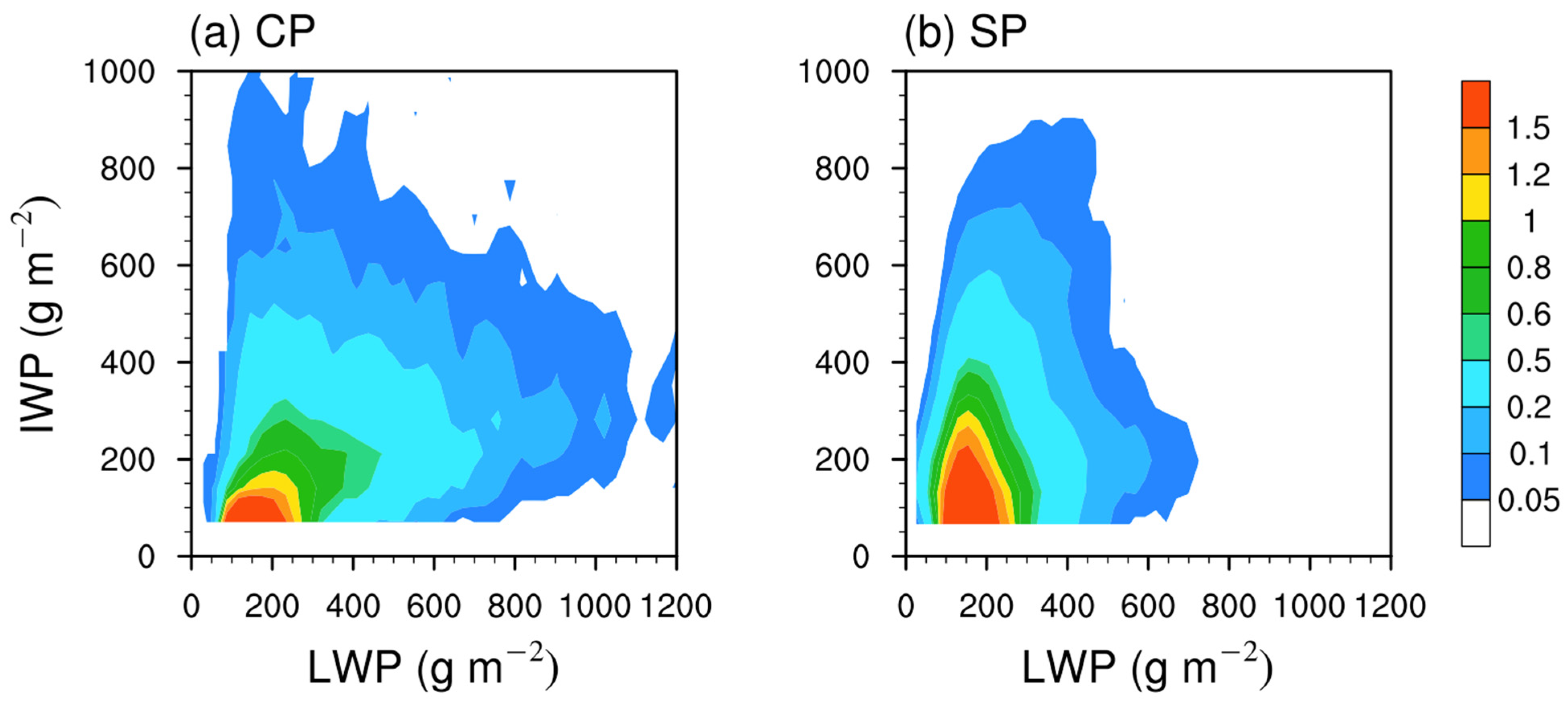
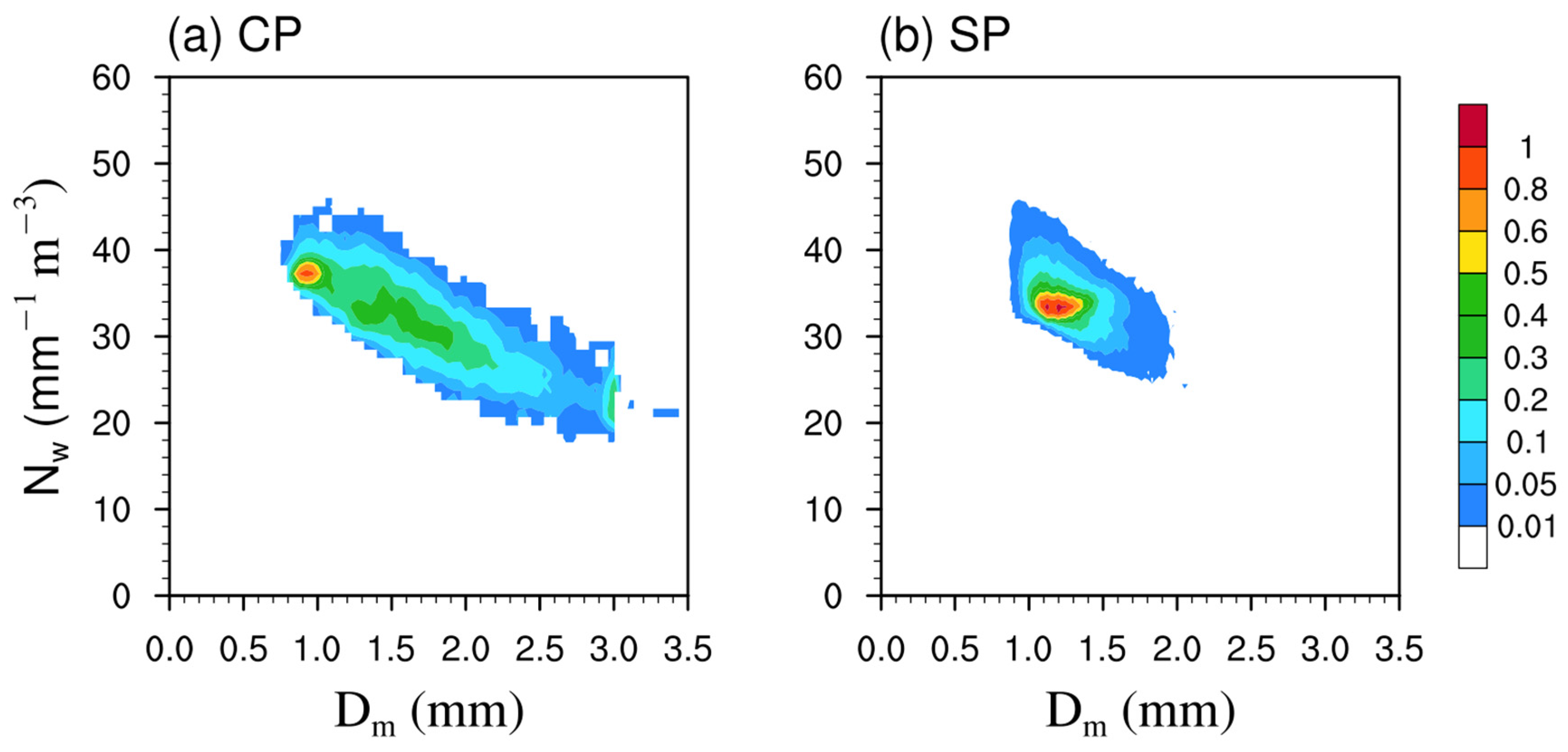
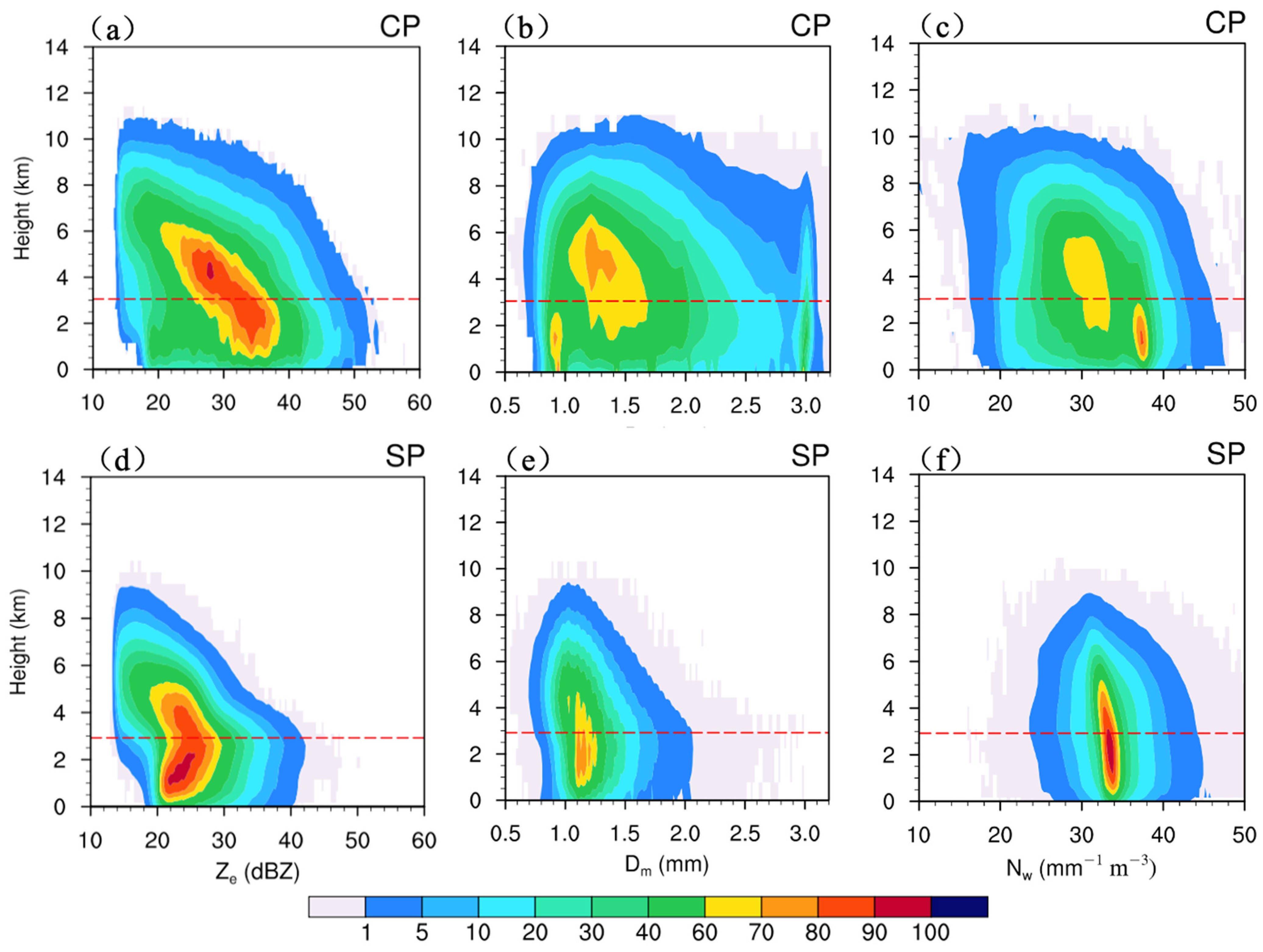
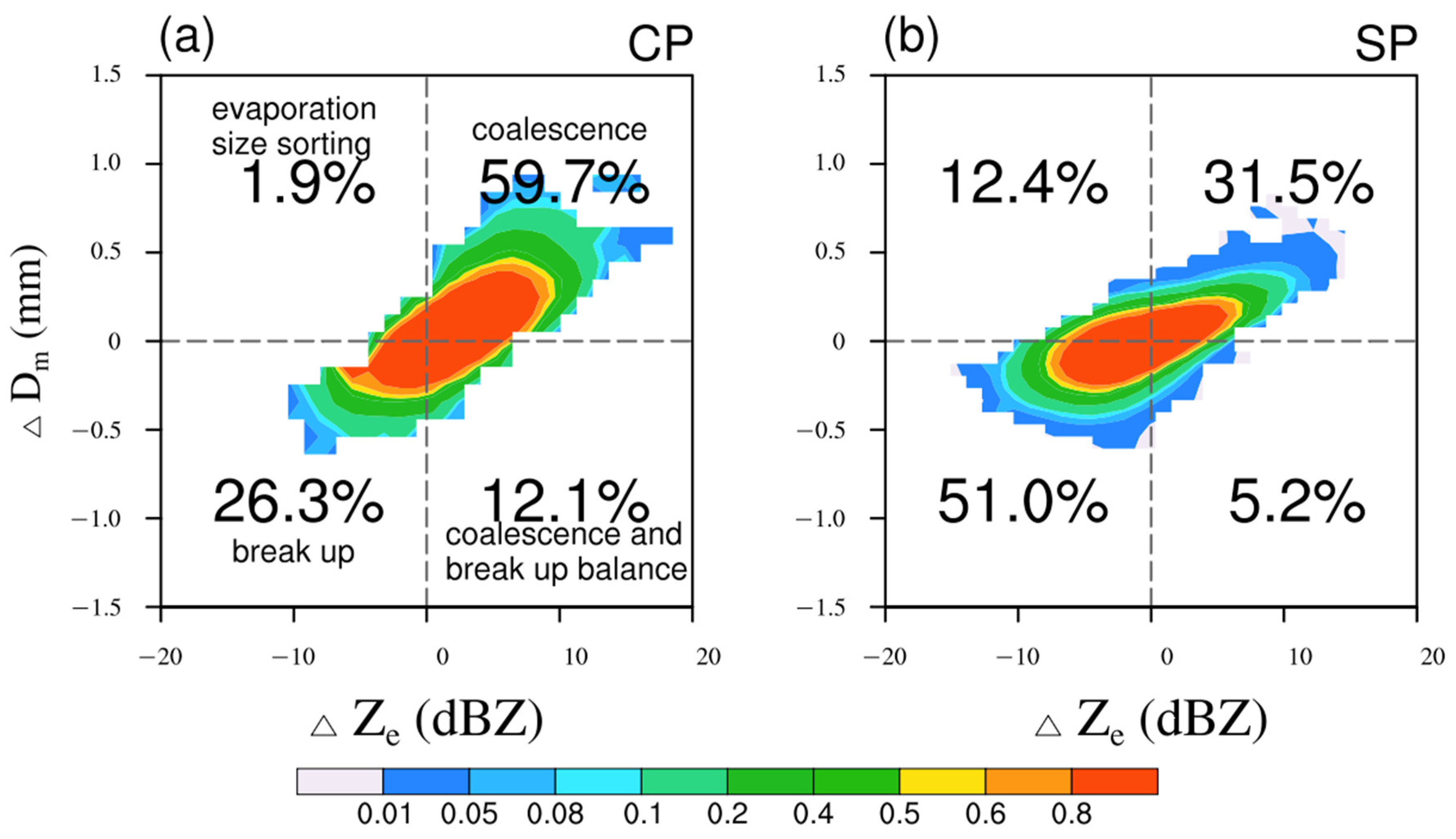


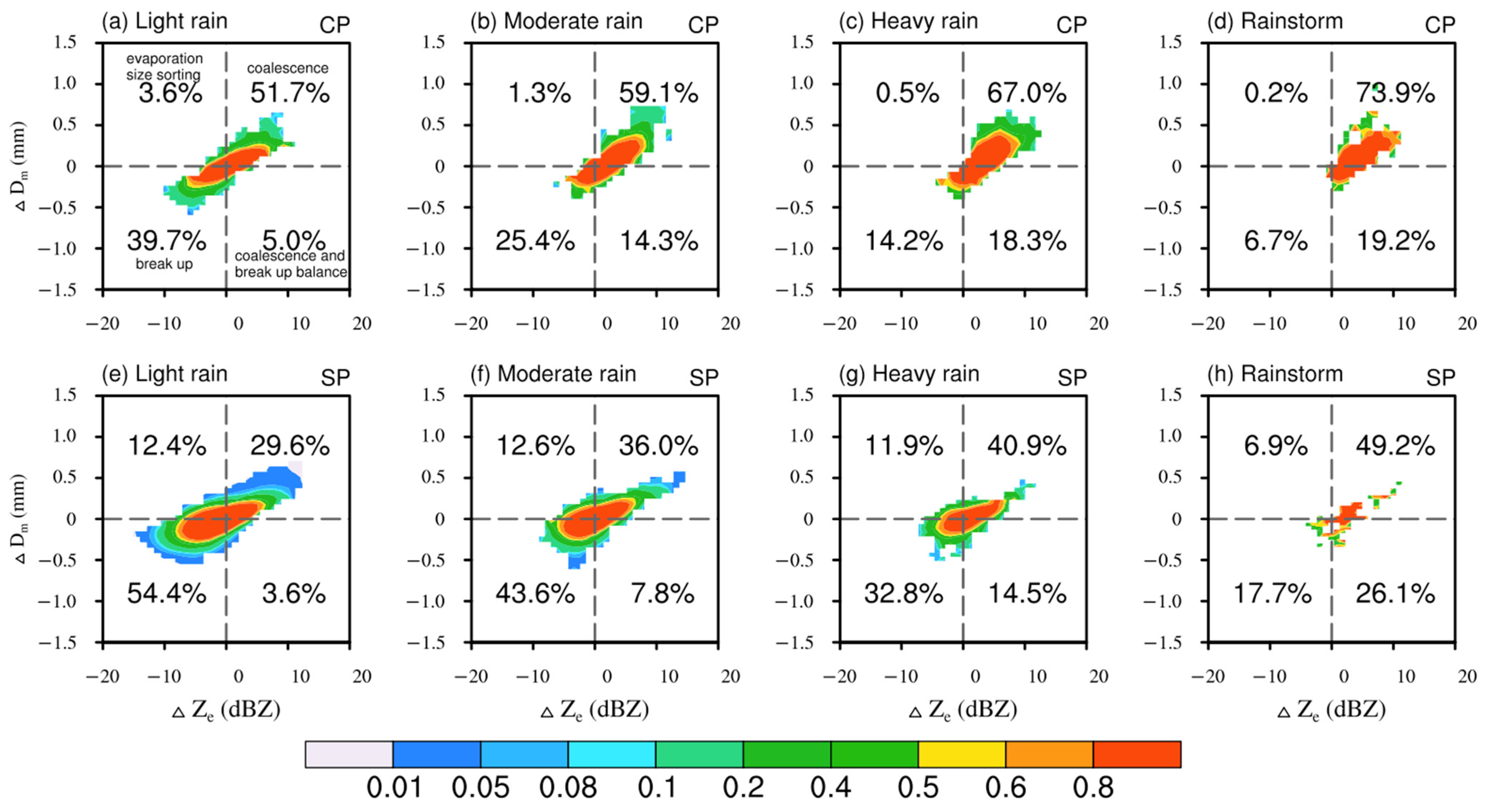
| Regions | Precipitation Type | Samples (Proportion %) | LWP (gm−2) | IWP (gm−2) | Diameter (mm) | Number Concentration (mm−1 m−3) |
|---|---|---|---|---|---|---|
| TD | Convective | 7712 | 528.7 | 410.7 | 1.7 | 31.9 |
| precipitation | (16%) | |||||
| Stratiform | 40,608 | 269.5 | 268.6 | 1.2 | 34.3 | |
| precipitation | (84%) | |||||
| Arabian Sea [40] | Convective | 7397 | 2923.1 | 322.9 | 1.5 | 36.3 |
| precipitation | (25%) | |||||
| Stratiform | 21,757 | 888.1 | 396.7 | 1.3 | 34.1 | |
| precipitation | (75%) |
Disclaimer/Publisher’s Note: The statements, opinions and data contained in all publications are solely those of the individual author(s) and contributor(s) and not of MDPI and/or the editor(s). MDPI and/or the editor(s) disclaim responsibility for any injury to people or property resulting from any ideas, methods, instructions or products referred to in the content. |
© 2025 by the authors. Licensee MDPI, Basel, Switzerland. This article is an open access article distributed under the terms and conditions of the Creative Commons Attribution (CC BY) license (https://creativecommons.org/licenses/by/4.0/).
Share and Cite
Zhang, W.; Ye, G.; Leung, J.C.-H.; Zhang, B. Microphysical Characteristics of Summer Precipitation over the Taklamakan Desert Based on GPM-DPR Data from 2014 to 2023. Atmosphere 2025, 16, 354. https://doi.org/10.3390/atmos16040354
Zhang W, Ye G, Leung JC-H, Zhang B. Microphysical Characteristics of Summer Precipitation over the Taklamakan Desert Based on GPM-DPR Data from 2014 to 2023. Atmosphere. 2025; 16(4):354. https://doi.org/10.3390/atmos16040354
Chicago/Turabian StyleZhang, Wentao, Guiling Ye, Jeremy Cheuk-Hin Leung, and Banglin Zhang. 2025. "Microphysical Characteristics of Summer Precipitation over the Taklamakan Desert Based on GPM-DPR Data from 2014 to 2023" Atmosphere 16, no. 4: 354. https://doi.org/10.3390/atmos16040354
APA StyleZhang, W., Ye, G., Leung, J. C.-H., & Zhang, B. (2025). Microphysical Characteristics of Summer Precipitation over the Taklamakan Desert Based on GPM-DPR Data from 2014 to 2023. Atmosphere, 16(4), 354. https://doi.org/10.3390/atmos16040354







